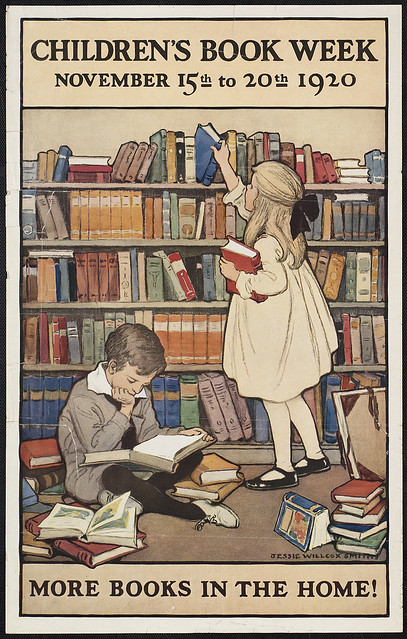“Living books” is a big buzzword in homeschooling these days. What does it mean? Really, living books are just good books, books that engage the reader and make the subject “come alive” in one’s imagination. But I realize that definition or re-statement rather begs the question.

© 2013 Boston Public Library, Flickr | CC-BY | via Wylio
1. Books that tell a story are to be preferred over books that recite facts. Some children sometimes can enjoy books that have little boxed facts grouped around the perimeter of the page or textbooks that just give the facts, m’am—for a while. But a dry recitation of tiny packets of information, even if it’s spiced up with pictures and fancy fonts, isn’t going to hold anyone’s attention though an entire book, or engage them to want to read more. We need and crave story. Tell me that bees live in hives with workers, drones and a queen bee, or tell me the story of a hive of bees with its queen that is about to become the victim of CCD (colony collapse disorder). Tell me the story of how, almost overnight, the worker bees disappear, and no one knows why it happens or what to do about it. In other words, tell me a bee story, true or fictionalized, and I will remember and be interested and engaged.
2. With the exception of picture books, which are a special case, books that emphasize printed narrative are to be preferred over books that devote most of their space to pictures and graphics. Unless the book is meant to introduce children to art and the rich world of artistic story, the books that you choose to read should be rich in narrative, painting pictures with words. And even picture books or wordless books should tell a story, and in in quality picture books the story and the illustrations work together to create a captivating narrative.
3. Living books are usually written by one author who has a passion for his subject or story, not by a committee. Books by committee, textbooks or compilations, are not useless, but they are usually ineffectual for the purpose of introducing a subject or arousing the reader’s passion and curiosity for learning more.
4. Books that appeal to the imagination and nourish passionate relationships with the subject of the book are to be preferred over books that simply provide pieces of information without giving readers a reason to desire that knowledge. Nowadays, one can turn to Wikipedia or other internet sources to get basic information about anything from kite-flying to welding. Sometimes, after a person has already developed an interest in a subject, knowledge intensive books are just what is wanted. However, “living books”, what Charlotte Mason called “ideas clothed upon with facts”, are what is needed to inspire interest, engage the imagination, and speak to the soul of a reader, giving him reason to remember the knowledge that can be acquired from books and from other sources.
5. Living books ask questions or create questions in the reader’s mind. Instead of telling a child that 3 x 4=12 (memorize it!), a living book might ask what would happen if we arranged twelve marbles into sets of four? Or sets of three? Or it might tell a story about how multiplication is used in the real world, or about the beauty of mathematics. Yes, there is a place for the memorization of multiplication tables and of other facts, but it is much easier to memorize or to get children to memorize when the facts that are being committed to memory are perceived as important and valuable.
6. Living books inspire rather than depress the mind and the spirit. Living books create a deep sense of hope in the reader, not by ignoring the sadness and and sin in the world, but but by showing that there is also beauty, hope and redemption to be found. Modern books tend to either end in near-despair (Hunger Games, other post-apocalyptic and dystopian young adult books) or deal in false hope (put on a happy face! follow your dream! you can succeed if you try!). If any book old or new is frightening your child (deeply, not deliciously) or leading them to despair, don’t read it, no matter how classic or beloved the book is.

© 2010 Jean-Etienne Minh-Duy Poirrier, Flickr | CC-BY-SA | via Wylio
Finally, brethren, whatever things are true, whatever things are noble, whatever things are just, whatever things are pure, whatever things are lovely, whatever things are of good report, if there is any virtue and if there is anything praiseworthy — meditate on these things. Philippians 4:8
Learn more about living books and about libraries that seek to preserve living books for all of us to enjoy:
Liz Cottrill and Emily Cottrill Kiser talk about their library, Living Books Library in Virginia.
Toward the Definition of a Living Book by Colleen Manning at Ambleside Online.
How a Library Was Born by Michelle Miller: Children’s Preservation Library in Michigan. (Old Schoolhouse Magazine)
How Can I Know if a Book Is Living? by Michelle Miller (Old Schoolhouse Magazine).
Our Good-Book-Collecting Journey by Michelle Miller (Old Schoolhouse Magazine)
Information about my living books library, Meriadoc Homeschool Library, in Houston, Texas.